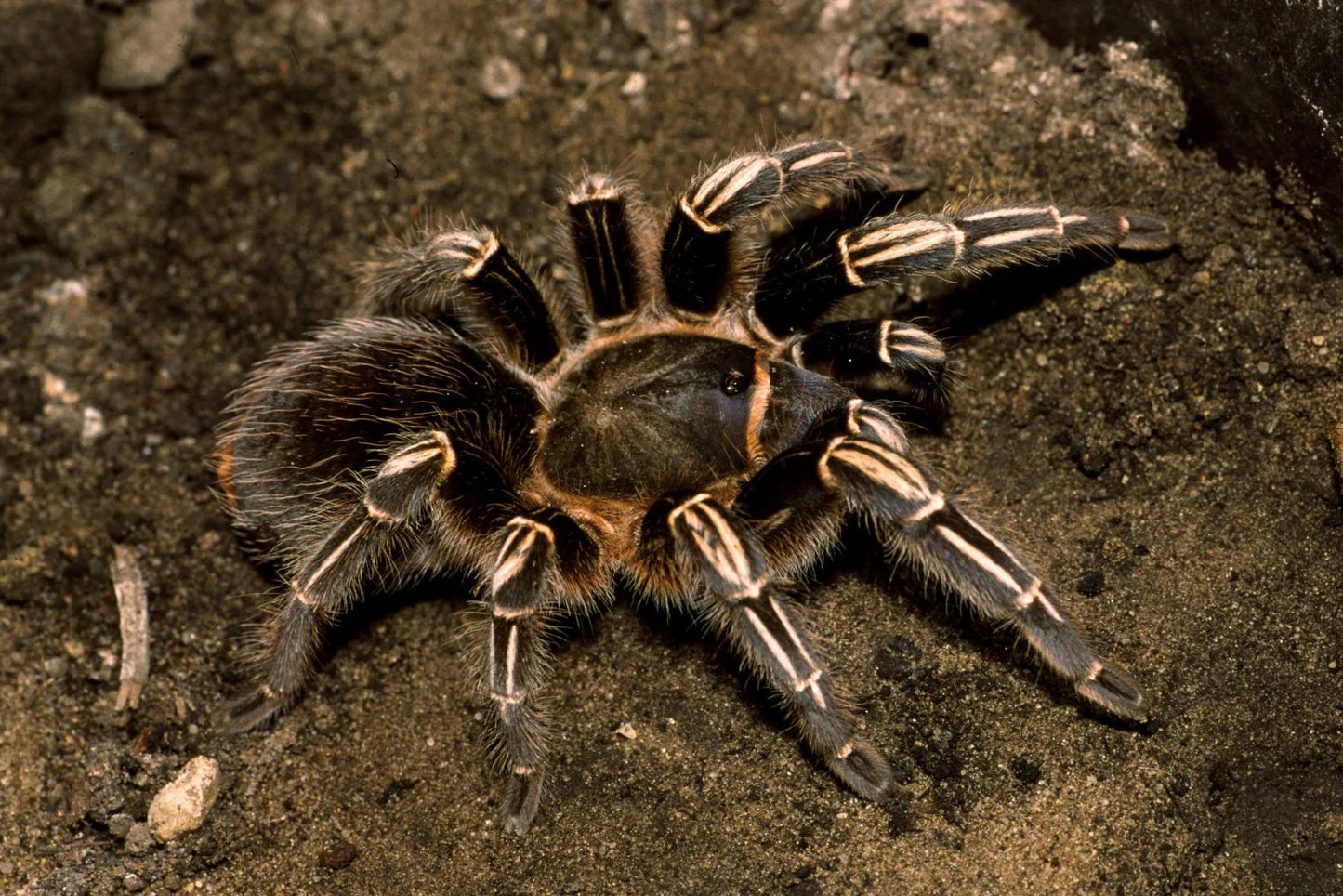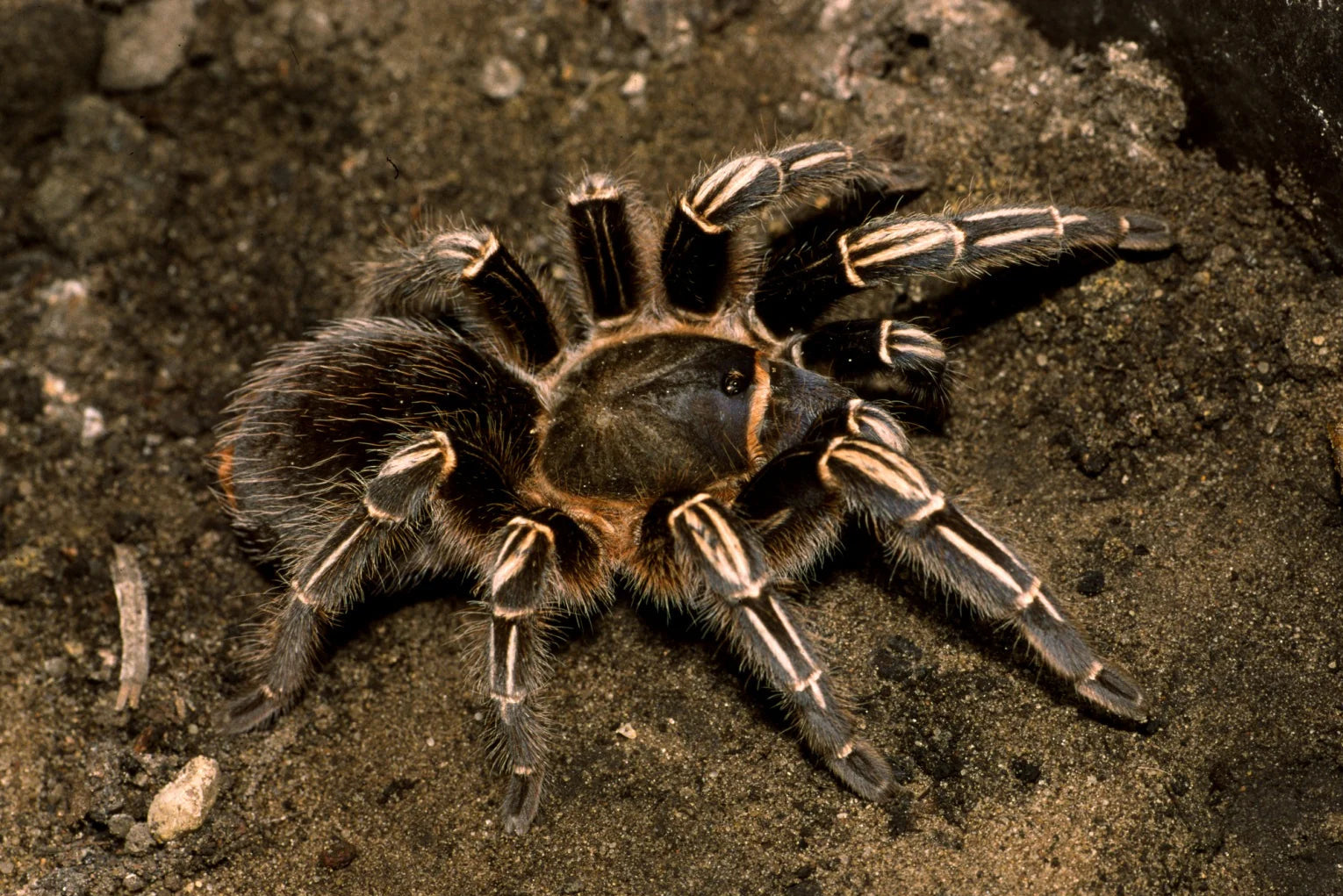Tarantuladen.co.za
Costa Rican Zebra (Aphonopelma Seemanni)
Costa Rican Zebra (Aphonopelma Seemanni)
Low stock: 6 left
Couldn't load pickup availability
The Costa Rican Zebra (Aphonopelma seemanni) — a classic Old School tarantula with serious personality, striking looks, and that cool, collected vibe. Also called the Striped Knee Tarantula, this species is great for both beginners and seasoned keepers who love burrowers with a bold streak.
Quick Facts
Common Name: Costa Rican Zebra / Striped Knee
Scientific Name: Aphonopelma seemanni
Origin: Central America (Costa Rica, Nicaragua, Honduras, Guatemala)
Size: 5–6 inches (12–15 cm) leg span
Lifespan:
- Females: up to 20+ years
- Males: ~5–6 years
Temperament: Generally calm, skittish but not defensive
Coloration:
- Deep chocolate to jet black body
- White or cream-colored stripes across the leg joints — zebra vibes
- Some morphs are blue or brown-toned, especially in natural light
Housing
Enclosure Type: Terrestrial — but a deep burrower, so floor space + depth is ideal
Substrate: 5–6+ inches of moist substrate (coco fiber/topsoil mix)
Humidity: 65–75% (keep the lower layer moist but not soaked)
Temperature: 70–78°F (21–26°C)
Decor:
- Deep hide (like a cork round) or just let it dig its own burrow
- Leaf litter, moss, and a water dish
- Keep it natural — this girl likes it earthy
Expect tunnels and deep hides — A. seemanni loves to go subterranean.
Feeding
Diet: Crickets, roaches, mealworms
Feeding Frequency:
- Slings: 2–3x/week
- Juveniles: Weekly
- Adults: Every 10–14 days
They’re not aggressive feeders but will take prey confidently when hungry
Why She's a Staple
Striking contrasty look — especially those knee stripes
Very hardy — tolerates a range of temps/humidity well
Long-lived and low-maintenance
One of the calmer Aphonopelma species, great for observation
Natural burrowing behavior is fascinating if you give them the depth
Notes
Can be very shy — may spend a lot of time in her burrow
Not great for handling — too skittish, and can bolt unexpectedly
Needs moist substrate, so watch your humidity closely
Not a display spider unless it feels very secure
Share


